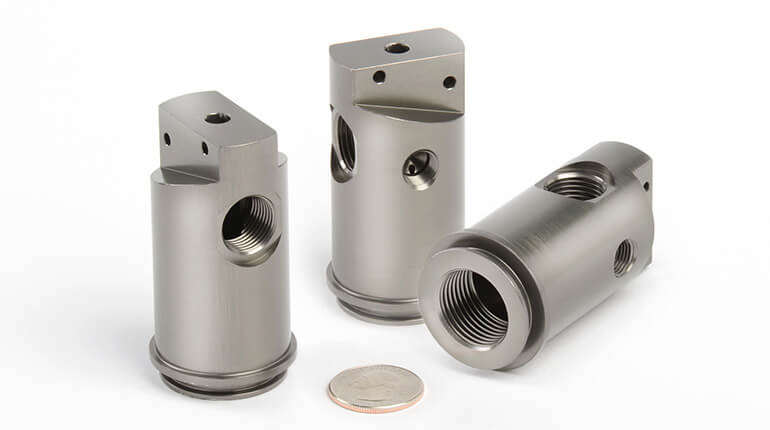
How to Maximize Your CNC Machining of 6061
Aluminum 6061 is the versatile workhorse of modern manufacturing. Learning how to maximize your CNC machining of 6061 ensures better parts and lower costs for your projects.
This guide covers essential speeds and feeds, tooling selection, and surface finish options. You will discover practical tips to optimize efficiency and achieve precision in every cut.
Why Choose Aluminum 6061 for CNC Projects?
Aluminum 6061 is one of the most popular alloys in the machining world. It offers an excellent balance of strength, weight, and workability.
You will find it easy to machine compared to harder alloys. It produces chips easily and does not wear out tools quickly.
This material is highly corrosion-resistant. It serves industries ranging from aerospace components to consumer electronics.
Additionally, 6061 is heat-treatable and easy to weld. This makes it ideal for complex structural assemblies.
Optimizing Speeds and Feeds for 6061 Aluminum

Getting your parameters right is the key to efficiency. Incorrect speeds can lead to poor finishes or broken tools.
Recommended Surface Speed (SFM)
Aluminum 6061 can handle high cutting speeds. You should aim for high Surface Feet Per Minute (SFM).
For High-Speed Steel (HSS) tools, start between 300 and 400 SFM. However, carbide tools perform much better.
With carbide, you can run between 600 and 2,000 SFM. High speeds prevent the material from sticking to the tool.
Determining the Ideal Chipload
Your feed rate depends on the tool diameter and chipload. You must keep the tool cutting, not rubbing.
A general target is 0.001 inches to 0.010 inches per tooth. Larger tools can handle heavier chiploads.
Aggressive feeds help evacuate heat with the chip. This keeps your workpiece cool and prevents warping.
Selecting the Best Cutting Tools for 6061

Tool selection dictates the success of your machining process. The wrong geometry causes gummy buildup.
Carbide vs. High-Speed Steel (HSS)
Carbide is the superior choice for CNC machining aluminum. It is more rigid and withstands higher heat.
Carbide allows you to maximize your spindle speed (RPM). This reduces cycle times significantly.
HSS is cheaper but flexes more. Only use HSS for non-critical drilling or manual machining tasks.
Choosing the Right Flute Count
Chip evacuation is critical in aluminum. You must give chips enough space to escape the cutting zone.
Use 2-flute or 3-flute end mills. These provide deep gullets for efficient chip removal.
Avoid 4-flute end mills for slotting. They pack with chips quickly, leading to tool breakage.
Preventing Common Issues Like Built-Up Edge (BUE)
Built-Up Edge (BUE) happens when aluminum welds itself to the cutting tool. This ruins tool life and surface finish.
You can prevent this by using polished tools. A smooth flute surface stops the material from sticking.
Coating selection matters. Use uncoated bright finish or ZrN (Zirconium Nitride) coatings.
Avoid AlTiN coatings. The aluminum in the coating has an affinity for the workpiece, causing adhesion.
Coolant Strategies for Efficient Aluminum Machining
Aluminum dissipates heat well, but machining generates plenty of it. You need proper lubrication.
Flood coolant is the best method. It flushes chips away from the cutting path and cools the part.
Recutting chips ruins surface finishes. High-pressure coolant prevents this effectively.
If flood coolant is impossible, use a mist system. Never machine 6061 completely dry for heavy cuts.
Achieving Superior Surface Finishes on 6061 Parts

6061 is known for its ability to achieve excellent aesthetic results.
As-Machined Finish Standards
A standard "as-machined" finish is typically Ra 125. However, 6061 can easily achieve Ra 32 or better.
To get a mirror finish, take a light finish pass. Use a high RPM and a slower feed rate.
Anodizing and Chem-Film Options
6061 is perfect for post-processing. Anodizing increases durability and allows for color customization.
Type II anodizing adds color and corrosion resistance. Type III (Hard Coat) creates a wear-resistant surface.
Chem-film (Alodine) is another option. It maintains electrical conductivity while protecting against corrosion.
5 Tips to Reduce Costs in 6061 Machining
You can save money by designing for manufacturability.
- Standardize Stock: Design parts to fit standard material sizes to reduce waste.
- Limit Pocket Depth: Deep pockets require long tools. This increases vibration and cycle time.
- Relax Tolerances: Do not request +/- 0.001" unless necessary. Tighter tolerances increase inspection time.
- Use Standard Radii: internal corners should match standard tool sizes.
- Avoid Sharp Corners: Leave a radius on internal vertical edges to allow continuous milling.
Standard Machining’s Expertise in 6061 Aluminum Services
At Standard Machining, we specialize in optimizing these processes. Our facility utilizes advanced 3, 4, and 5-axis equipment.
We understand the nuances of 6061 aluminum. We guarantee precision, speed, and consistent quality.
Whether you need a prototype or high-volume production, we have the capacity. We ensure your parts meet the strictest standards.
Conclusion
Mastering 6061 machining requires the right tools, speeds, and cooling strategies. By following these guidelines, you ensure high-quality parts and efficient production runs every time.
Ready to start your next project? Contact Standard Machining today for precise, reliable aluminum manufacturing solutions.
FAQs: CNC Machining 6061
Is coolant necessary when machining 6061 aluminum?
Yes, coolant is highly recommended. It clears chips to prevent recutting and manages heat. Without it, aluminum becomes "gummy" and sticks to the tool.
What is the difference between 6061 and 7075 aluminum?
6061 is versatile, weldable, and more affordable. 7075 is much stronger and harder but costs more and is difficult to weld.
Can 6061 aluminum be welded after machining?
Yes, 6061 has excellent weldability. It is frequently used in frames and structures that require both machining and welding.


